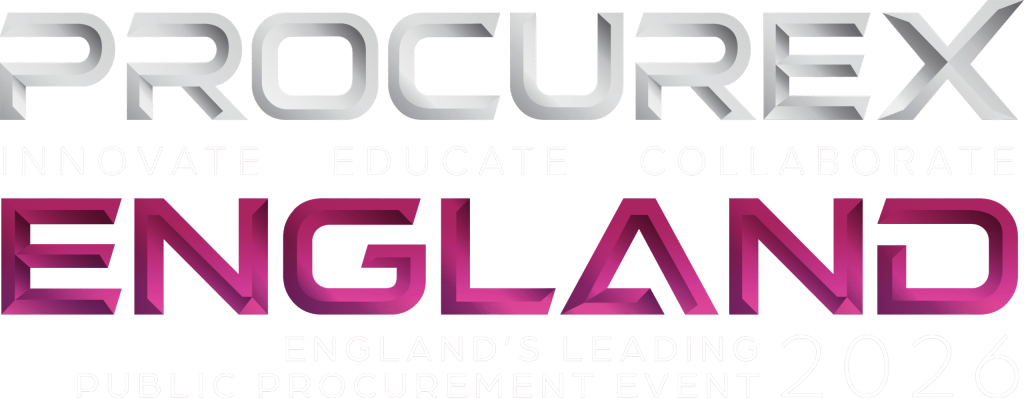In June 2021 the UK became the first country to formally ensure that all suppliers bidding for major Government procurements will be committed to achieving Net Zero by 2050, meaning no carbon emissions at all. This is particularly important as public sector procurement accounts for an estimated 15% of total greenhouse gas emissions globally.
The pressure is on for contracting authorities to reduce the UK’s greenhouse gas emissions, and that responsibility extends down the supply chain. This is tricky to manage, especially when it comes to scope 3 emissions – which are pretty indirect.
The six industries responsible for the highest carbon emissions are:
- Defence and security
- Transportation, including public transport
- Waste management services
- Construction
- Industrial processes
- Utilities
Unfortunately, that doesn’t limit the scope because almost any business can be implicated, such as cleaning services and suppliers’ manufacturers.
Mandatory Carbon Reduction Plans
The government isn’t leaving anything to chance when it comes to its net zero target, that’s why it introduced PPN06/21. The policy makes it mandatory for suppliers bidding on public sector contracts worth over £5 million annually to provide an achievable Carbon Reduction Plan (CRP).
PPN06/21 does several things to drive a greener economy. for example:
1) Promotes Environmental Sustainability
Businesses that want to compete in the public procurement market have no choice but to implement policies and practices that support a sustainable environment that, ideally, also includes social and economic elements.
2) Encourages Innovation
Most businesses will have to adapt their current operations to meet sustainability requirements. Innovation and the adoption of green technology is pretty much the only way to ensure their process, products, and services are sustainable and contribute to a green economy, as well as the UK net zero target.
What goes into a CRP?
The government has provided a CRP template to ensure everyone provides the same information in the same format. The standardised document simplifies the CRP evaluation process because assessors can immediately see weaknesses and strengths.
The template includes:
- A baseline year for greenhouse gas emissions and subsequent annual reporting
- Total annual carbon emissions produced in tonnes of CO2 equivalent
- Specific, measurable carbon reduction targets
- Steps to reduce emissions
Additional legislation supporting net zero targets
PPN06/21 goes hand-in-hand with the Social Value Model and Procurement Act 2023.
The Act emphasises social value, which includes environmental, economic, and social elements. All of these can contribute towards net zero goals if you plan your initiative with a reduction of carbon emissions in mind.
The Social Value Model comprises five themes, with their own outcomes. A relevant theme is:
- Fighting climate change, which entails effective stewardship of the environment.
That’s pretty broad, so there’s plenty of scope for innovation across the board, like green tech development, waste management, and renewable energy sources.
Sustainable Procurement Strategies for the Public Sector
If public sector procurement is all about sustainability and the net zero target, suppliers must shift perspective and deliver sustainable solutions that work towards net zero. But, is it easy to make that shift?
Yes, and no.
It’s (relatively) easy to focus on sustainability and green initiatives in social value requirements. There’s no need to come up with the most innovative carbon reduction device on the planet. Suppliers can simply collaborate with established organisations with strong sustainability credentials.
This is where SMEs have an advantage over larger enterprises. They know what’s happening in their communities, and if they don’t, it’s not difficult to engage non-profits and find out what pain points present the biggest challenges.
Being proactive in this way can impress contracting authorities and give suppliers a slight edge in the market. It also buys them time to develop their own innovative, actionable carbon reduction solutions.
Life Cycle Cost Analysis
One of the biggest challenges for contracting authorities is weighing MEAT (the most economically advantageous tender) against price. This is where life-cycle costing (LCC) and whole-life costing (WLC) come into play. In essence, it’s the total cost of goods/services based on the whole lifecycle and not just the purchase price.
LCC includes the following costs:
- Purchase price
- Operating costs
- Maintenance
- Disposal costs
- Training
- Insurance
- Environmental and social impacts (greenhouse gas emissions, waste generation, and carbon emissions)
WLC includes these and every single other cost from inception to disposal.
Both LCC and WLC identify the value in the MEAT, highlighting the government’s duty to carry out activities that improve the environmental, economic, and social well-being of their local communities. In the end, buyers can see the tender’s true value for money, which is what they’re after.
Sustainable Procurement Challenges
Here’s the ‘no’ part. Many challenges seem insurmountable at first glance, especially for new suppliers and SMEs. Here are two of the most common challenges in combating climate change.
1) Financing Sustainability
This is a big one. New tech, equipment, upgrades, and employee training are expensive. You can call it an investment as much as you like, but it’s still expensive. Doing one expensive thing and one affordable simultaneously however can help with this. For example, upgrade your equipment and switch to energy-efficient lighting across your business.
Note: Financial aid is available, including grants.
2) Employee Training
Staff will need training. Not only to optimise new operations and use new equipment but also to adjust to a sustainable mindset. It can be quite a shift for some people. However, if they understand their role in combating climate change, and see how the business’s operations reduce global emissions, they are often motivated to achieve their business’s sustainability goals, as well as the UK’s net zero target.
Technology & Data are Revolutionary Tools in Sustainability Tracking
Technology’s monitoring capabilities are crucial when assessing environments, especially when it comes to comparing before, during, and after assessments. Drones are just the tip of the iceberg when it comes to providing real-time data on the contract’s impact on the environment. The data helps identify impending problem areas and enables suppliers and buyers to act proactively and avoid the problem altogether.
Back on land, advanced tech drives renewable energy and can be integrated into office solutions to manage resources and energy usage so businesses operate as sustainably as possible.
Data & Sustainability
Data is arguably more important than technology, no matter how sophisticated. The reason is simple, data is the basis for all net zero plans, actions, analysis, and adaptation. There is nothing without data.
So how does data work in sustainable procurement?
Analytics data provides reports and insights (in real-time) that enable buyers and suppliers to make data-driven decisions that keep sustainability and carbon reduction plans on track.
The preciseness of data analytics provides a full picture of resource management and carbon emissions produced, so suppliers and buyers can optimise resource allocation to reduce emissions. It can also monitor energy efficiency in the workplace, so business owners can see where energy consumption is highest and implement strategies that either reduce energy consumption at the source or, if that’s not possible, increase energy efficiency elsewhere.
Importantly for carbon reduction plans, tech can provide data on the specific types of emissions measured in public sector procurement.
Scope 1: Direct: Owned or controlled sources
Scope 2: Indirect: Generation of purchased energy
Scope 3: All other indirect carbon emissions within the supply chain
This data is crucial to strategic decision-making and developing actionable solutions that help achieve net zero.
Let’s not forget the role AI and automation play in the fight against climate change.
AI and automation are pivotal in sustainability. AI’s ability to crunch enormous amounts of data quickly and segment it into predetermined sets, and then analyse and evaluate the data is invaluable.
Automation of basic (and not-so-basic) routines and tasks saves time and money and frees employees to concentrate on more constructive activities. It improves the accuracy of data collection and analysis, which is essential for carbon emissions reporting. Moreover, it ensures transparency in the procurement process. Not to mention compliance with climate change regulations, so owners can go about their business without worrying about penalties for non-compliance.
Net zero is achievable, but only if everyone plays their part. Given that public sector procurement produces such a high proportion of greenhouse gas emissions, businesses and government bodies must collaborate to ensure the tender process and contract delivery are as green as possible.
Delivering on net zero: NHS Case study
The NHS is a leader on the road to net zero. With more than 60% of NHS carbon emissions occurring in the supply chain, working with suppliers will not only enable them to reach net zero but will deliver significant social value – cutting costs for the NHS, improving health and wellbeing, and supporting local economies (Greener NHS, March 2022). To do this, the NHS has created a net zero roadmap working with their suppliers, with a phased plan to encourage them to start acting now but setting a net zero ambition and planning for decarbonisation in the next few years. Change is already afoot – From April 2023, suppliers bidding for all new contracts above £5 million per annum were required to publish a Carbon Reduction Plan for their UK Scope 1 and 2 emissions and a subset of scope 3 emissions as a minimum. This extended to cover all new procurements from April 2024.
This is not dissimilar to other organisations – we don’t do business in a vacuum and our carbon emissions are really a result of a nexus of mutual activity. We expect to see this pressure increasing across the board, year on year. Last year it was about large organisations needing to disclose their carbon footprint in their financial accounts; this year we see this pressure really trickling down across the whole economy as the gears of climate policy get traction.
Reducing carbon emissions and delivering on sustainability and net zero will be key topic of conversation and insight when Procurex England returns to Liverpool on 21 May. Guarantee your place today to hear from some of England’s leading public procurement and sustainability experts on the major challenges and opportunities facing buyers and suppliers in their bid to achieve Net Zero by 2050 – Book Now – Procurex England 2025



